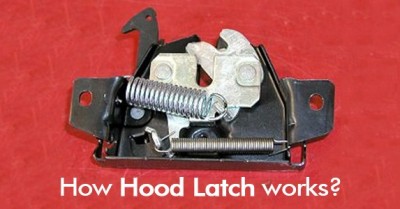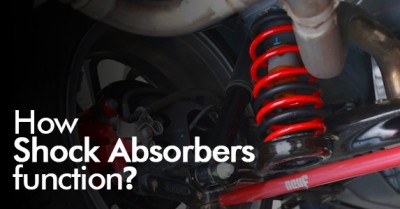Understanding Car Door Latching Systems

A car door latching system is a complex mechanical, occasionally electro-mechanical, component that locks down a vehicle's doors, protecting its occupants' safety and convenience.
Car door latch systems ensure your and other passengers' safety by firmly closing the doors. Handles both inside and outside the vehicle can be used to open the doors. Thanks to contemporary technologies like central locking and keyless entry, you may operate the locks remotely. Safety measures like crash sensors and kid locks guarantee that the doors will unlock in the event of an accident. All in all, this system is essential to the structural integrity of the vehicle as well as your comfort and safety.
Parts of the Car Door Latching System
Latch
The latch is the primary control component of an automobile door latching system and ensures that the door remains locked firmly. This complex component usually affords a hook/claw that engages the striker, a part fixed to the door frame. The latch is a mechanism that hooks itself to the striker plate through a hook or a claw when the door is shut from the inside and clicks into place, thus providing the much-needed lock that can prevent an outsider from opening the door.
Striker
The striker is important in ensuring that the vehicle's doors are shut correctly and optimally. A semi-circular metal strip or a sturdy bar is the usual construction of this fixed member bolted into the door frame. The type of side door latch function that comes into play with the striker once the door is shut ensures that the door is closed tightly. This means that the striker and the Latch have to be in the correct position to lock into place, and sometimes, slight misalignment is likely to bring out issues.
Locking Feature
The locking mechanism is one of the most important parts of an automobile door latching system. It ensures the door stays secured and closed. This device can run on an electric system or be operated manually. When employing a manual locking system, the user usually turns a key in the door lock cylinder or uses an inside lock button or lever to operate the lock. The manual mechanism keeps the door securely secured by physically preventing the latch from disengaging from the striker when it is engaged.
On the other hand, powered locking mechanisms have incorporated electric actuators to accomplish the same job as manual locking systems but with even more comfort and unique functions. These electric locks often work with the locking system, where all doors can be locked or unlocked with a remote key’s flick or a button within the car.
Rods and Cables
Control rods and cables are crucial parts of an automobile door locking system since they connect the door handle and the latch mechanism. Their main job is to move the mechanical force delivered to the handle to the latch, which opens the door. Pulling the door handle releases tension on the control rod or cable, causing the latch mechanism to be released from the striker and permitting the door to swing open.
Operation of a Car Door Latching System
- Closing the Door: Closing a car door initiates a fundamental interaction between the latch mechanism and the striker.
- Locking the Door: The locking mechanism can be activated after closing the door. Manual systems can accomplish this using an internal lock button or a key, but contemporary autos frequently use an electronic actuator to control this. The latch cannot be released from the striker once it is locked.
- Opening the Door: Pulling the handle will cause a control rod or cable attached to the latch to be pulled, opening the door. This releases the striker and latch, enabling the door to open. Pulling the handle does not release the latch if the door is locked; the lock must be unlocked first.

Manufacturing of a Car Door Latching System
1. Design and Prototyping
The process starts with the design, where engineers develop the blueprints of the latch and its specific requirements and parameters. This includes defining the length, width, and depth, the material from which the latch is produced, and its role. More often, prototyping may be used to try different designs, look for flaws, and modify them before mass production.
2. Material Selection
In this case, an engineer or car parts manufacturer may need to make many choices regarding the latch material to ensure good function. Steel, stainless steel, aluminum, and alloys are frequently used metals in different forms. In many cases, the strength of the given material and resistance against corrosion determine the material to be used.
3. Metal Forming
The hook or claw part of the latch, the internal and external parts of the latch, and the striker are usually made through metal working processes, including stamping, forging, or casting. These processes help develop the material and impose its needed form and dimensions.
4. Machining
When the parts and subassemblies are made from the basic parts, the forming enables the required level of accuracy and finish through machining operations. Other processes like drilling, milling, turning, and grinding might be required to achieve a closer tolerance and better fit for the finished surface.
5. Assembly
This stage requires joining other related parts to design the overall latch. This may involve cementing springs, pins, and other small components and installing lock means and control rods.
Final Words
Car door latching systems are critical systems that help ensure the car's and its occupants' safety. The drivers and the automotive engineers need to know how these systems function, the major components that make up these systems, and the various categories of these systems. These systems range from manual ones to power-operated mechanisms. They maintain safety by keeping the doors closed while driving and within reach when they need to be opened. Yielding proper maintenance and troubleshooting procedures can help prolong the life expectancy and durability of these systems, which are crucial for vehicle safety.
As a leading manufacturer of car door latching systems, JMIL takes great pleasure in producing products that prioritize functionality and safety. We guarantee that your car's doors stay firmly closed as you drive, giving drivers and passengers peace of mind. Our precisely constructed latching systems are designed for reliability and precision.
Invest in high-quality car door latching systems with us to improve your cars' functionality and security. For trusted solutions that promote excellence on the road, put your trust in JMIL.





















Comments (0)